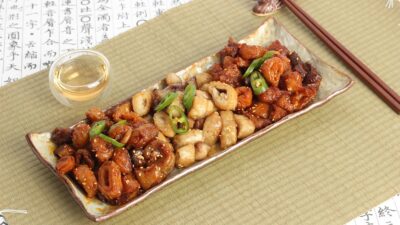In recent years, the world of beverages has undergone a remarkable transformation. Alcohol-free mixology, once relegated to the fringes of cocktail culture, has burst into the mainstream, captivating the imaginations and taste buds of a diverse demographic. With an increasing number of consumers seeking healthier lifestyles and mindful drinking, mocktails have emerged as a sophisticated alternative, offering all the creativity and flair of traditional cocktails without the alcohol.
The Shift in Consumer Preferences
The wellness movement has played a significant role in this shift. As more people become aware of the health implications of alcohol consumption, they are looking for options that enable social engagement without the side effects associated with drinking. According to a report by the IWSR, the non-alcoholic beverage market is projected to grow by 31% in the next few years, a trend significant enough to capture the attention of beverage innovators and mixologists alike.
In tandem with health consciousness, the rise of “sober-curious” culture has also contributed to this phenomenon. Many consumers are exploring periods of sobriety, motivated by a desire to reduce their alcohol intake or completely abstain. This evolving mindset has created a space where alcohol-free beverages can thrive, and savvy bartenders are seizing the opportunity to craft enticing options that rival traditional cocktails.
The Art of Alcohol-Free Mixology
Alcohol-free mixology is an art form that combines quality ingredients, innovative techniques, and presentation flair to create beverages that are both visually stunning and satisfyingly complex in flavor. The hallmark of effective mocktail creation lies in balancing flavors, textures, and aromas—components traditionally associated with their alcoholic counterparts.
Key Components of Mocktail Creation
-
Base Ingredients: Thoughtful selection of base ingredients is crucial. Fresh juices, herbal infusions, artisanal sodas, and flavored syrups serve as the foundation for mocktails. For instance, a refreshing cucumber-mint tonic can evolve into a sophisticated cocktail-like beverage with the addition of premium tonic waters and herbal elements.
-
Flavor Complexity: The layering of flavors—sweet, sour, spicy, and umami—can be achieved through creative ingredient combinations. A mocktail made with ginger beer, lime juice, and muddled berries showcases this complexity while also appealing to those who crave a hint of spice.
-
Textures and Garnishes: Texture plays an important role in the drinking experience. Adding elements like foams, spices, or edible flowers can elevate the mocktail’s visual appeal and mouthfeel. A carefully crafted rosemary-garnished mocktail served in an elegant coupe glass can evoke the same feelings of indulgence as a traditional cocktail.
- Presentation: It’s not just what’s in the glass; it’s how it’s presented. Unique glassware, eye-catching garnishes, and vibrant colors can make a mocktail stand out at any gathering.
Popular Trends in Alcohol-Free Beverages
As the mocktail scene flourishes, several trends have emerged:
-
Craft Non-Alcoholic Spirits: The market is seeing a surge in non-alcoholic spirits that mimic the flavors and profiles of traditional liquors. Brands are producing “botanical gins,” “whiskey alternatives,” and “non-alcoholic rums,” offering consumers familiar tastes without the effects of alcohol.
-
Functional Ingredients: Health-conscious consumers are gravitating toward beverages infused with functional ingredients like adaptogens, superfoods, and probiotics. These ingredients not only add flavor but also provide health benefits, making these beverages appealing to the wellness market.
- Events and Experiences: Bars and restaurants are increasingly hosting alcohol-free events, offering sophisticated tasting menus featuring alcohol-free pairings, workshops, and tastings. This encourages exploration and appreciation of non-alcoholic options.
Crafting Your Own Mocktail
Creating alcohol-free cocktails at home is accessible and enjoyable. Here’s a simple recipe for a refreshing mocktail you can try:
Citrus Basil Spritz
Ingredients:
- 1 oz fresh lime juice
- 1 oz fresh orange juice
- 2 oz sparkling water
- Fresh basil leaves
- Ice
- Lime and orange slices for garnish
Instructions:
- In a shaker, muddle fresh basil leaves with lime and orange juice.
- Add ice and shake well.
- Strain into a glass filled with ice and top with sparkling water.
- Garnish with lime and orange slices, adding a few basil leaves for flair.
Conclusion
The rise of alcohol-free mixology is more than just a trend; it’s a reflection of changing social attitudes toward drinking and health. As consumers seek sophisticated options that align with their lifestyles, the creativity and innovation of mixologists will continue to push the boundaries of alcohol-free beverages. With every refreshing sip, the allure of tantalizing mocktails redefines the social landscape, inviting everyone to join in on the experience—one dazzling drink at a time.



